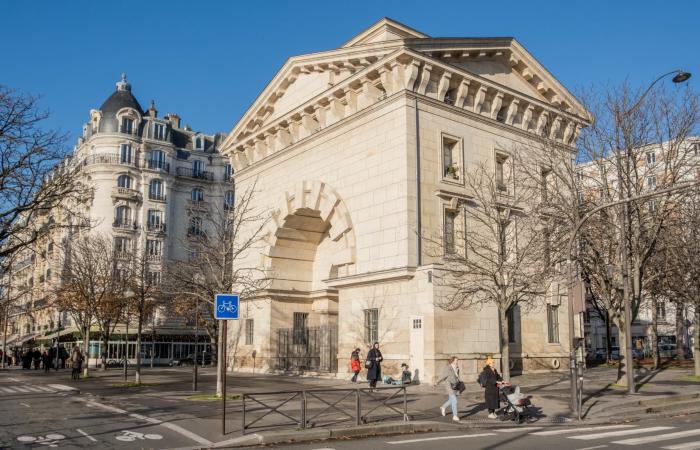Social housing is available in one of the two grant pavilions located near Place de la Nation in Paris. Ceiling height, “loft look”, but fairly dark accommodation… Living in a historic monument has certain particularities.
Apartment for rent, atypical volumes and ceiling height… dizzying. What if you lived in a historic monument? Some people pass in front of the two grant pavilions on Avenue du Trône in Paris every day, without imagining that these majestic buildings house social housing.
A 53 m² at 632 euros per month
One of them is for rent and an ad was posted on the Paris Habitat website for a rent of 632 euros including charges. It provides 53 m² with a double living room and a bedroom.
For those who live there, returning home feels a bit like changing centuries. And for good reason, the two pavilions were part of the old grant barrier, built in 1787 and which surrounded Paris at the time. Goods and merchandise that crossed this border were taxed.
The real estate market: Guarantees against unpaid rent and squatting – 05/11
And the employees responsible for applying the tax were housed… in the pavilions:
“These were company housing, so these buildings have always had a residential vocation,” explains Hélène Schwoerer, deputy general director of project management and development at Paris Habitat.
Located between the 11th and 12th arrondissements near the Place de la Nation, they were classified as historic monuments in 1907. In 1993, they were rehabilitated and transformed into social housing and their management entrusted to Paris Habitat. Exactly identical, they each offer 16 social housing units.
“A loft look”
Absolutely massive stone walls, a vaulted porch decorated with two pillars with Doric capitals… An exceptional place, but unusual for accommodation. Windows in particular are few in number.
“It’s true that it’s not the brightest place, but it has other advantages,” says Sébastien Deslandes, communications manager at Paris Habitat, who has already visited one of the apartments.
“These accommodations offer atypical volumes, with very high ceilings which almost give a loft-like appearance.”
“We have a tenant who has lived there for 30 years, and she is delighted,” continues, while ensuring that the turnover rate is low and that he has no difficulty finding new tenants.
In 2016, a facade renovation took place: “We worked closely with the Ministry of Culture to respect the heritage rules surrounding listed monuments,” explains Hélène Schwoerer.
In reality, according to her, social housing and historical monuments have always been linked.
“The history of social housing in Paris is the history of the city.”
Thus Paris Habitat has both recent buildings and buildings from the 16th, 18th or 19th century. “We take very particular care to revalorize this heritage. For example, we own three buildings by Henri Sauvage, the architect of La Samaritaine,” she explains.
Currently, Paris Habitat teams are working on a 16th century mansion located in the 4th arrondissement and having belonged to a Duke of Lorraine. The social landlord owns more than 127,000 housing units and has set itself the mission of continuing to “continue this unique heritage”.







